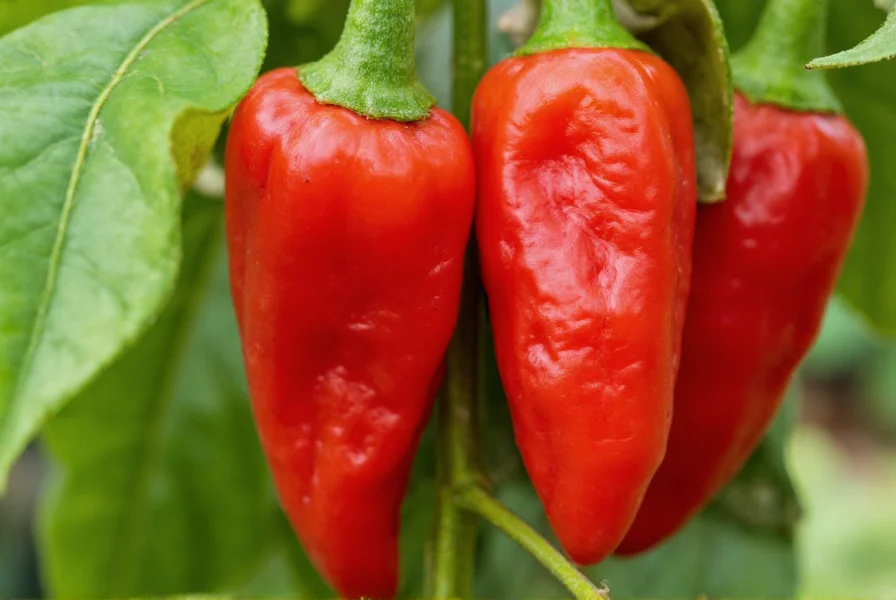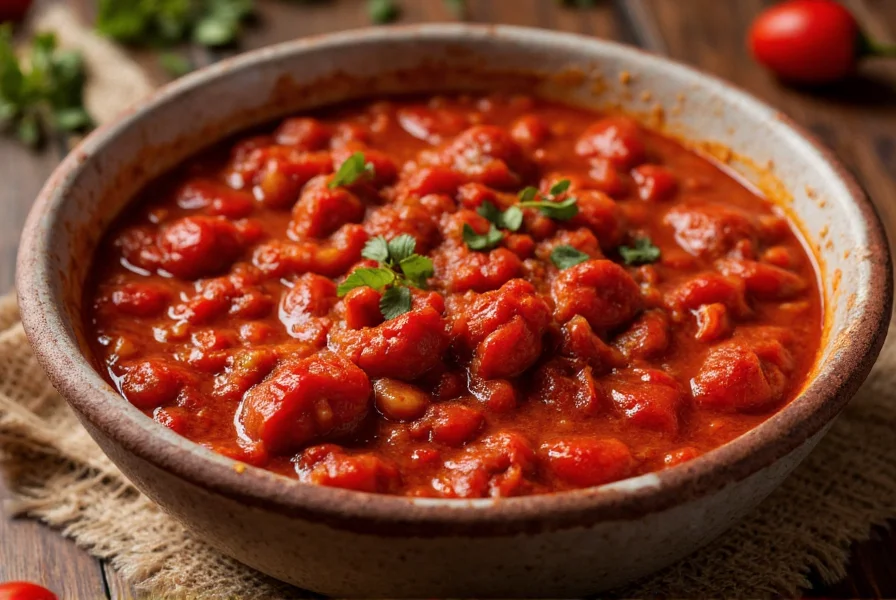The current spiciest chili pepper in the world is Pepper X, officially verified at 2,693,000 Scoville Heat Units (SHU) by Winthrop University in 2023. This South Carolina-bred pepper surpassed the long-standing Carolina Reaper (1,641,500-2,200,000 SHU) as the Guinness World Record holder for hottest chili pepper, marking the first official change in the title since 2013.
For chili enthusiasts and culinary adventurers seeking the ultimate heat experience, understanding the current champion of capsaicin potency is essential. The quest for the spiciest chili pepper represents decades of selective breeding, scientific measurement, and careful verification. Unlike viral claims that frequently circulate online, officially recognized super-hot peppers undergo rigorous laboratory testing to confirm their Scoville ratings.
The Science Behind Super-Hot Chili Measurement
Chili pepper heat is measured using high-performance liquid chromatography (HPLC), which precisely quantifies capsaicinoids—the compounds responsible for spiciness. The results are converted to Scoville Heat Units (SHU), named after pharmacist Wilbur Scoville who developed the original organoleptic test in 1912. Modern HPLC testing provides objective measurements far more accurate than the subjective human-tasting method Scoville originally used.
Pepper X's staggering 2.69 million SHU rating means it would require 2,693,000 times more sugar to neutralize its heat compared to a bell pepper (0 SHU). For context, jalapeños range from 2,500-8,000 SHU, while police-grade pepper spray measures approximately 2,000,000 SHU.
Pepper X: The New King of Heat
Developed by Ed Currie of the PuckerButt Pepper Company in South Carolina, Pepper X represents the culmination of over a decade of selective breeding. Unlike many internet-famous "hottest pepper" claims, Pepper X underwent proper verification through:
- Multiple independent laboratory tests
- Consistent heat measurement across different growing conditions
- Official recognition by Guinness World Records in 2023
The pepper's appearance resembles a crumpled red cherry tomato with irregular bumps and deep fissures. Its flavor profile features initial sweetness followed by delayed, intense heat that can last up to 30 minutes. Currie developed Pepper X using cross-breeding techniques between Carolina Reaper and a secret pepper variety from Trinidad.

Historical Context: The Evolution of Super-Hot Peppers
The race to create the world's spiciest chili has evolved dramatically over the past two decades. The table below shows the progression of officially recognized record holders:
| Pepper Name | Peak SHU | Record Period | Developer |
|---|---|---|---|
| Bhut Jolokia (Ghost Pepper) | 1,041,427 | 2007-2011 | Assam, India |
| Trinidad Moruga Scorpion | 2,009,231 | 2012 | Trinidad and Tobago |
| Carolina Reaper | 2,200,000 | 2013-2023 | Ed Currie, USA |
| Pepper X | 2,693,000 | 2023-Present | Ed Currie, USA |
Each new record holder typically surpasses its predecessor by 20-30% in heat measurement. The progression demonstrates how selective breeding has dramatically increased capsaicin concentration while maintaining plant viability.
Safety Considerations for Handling Super-Hot Peppers
Working with peppers at the extreme end of the Scoville scale requires serious precautions. The highest scoville rating chilies like Pepper X can cause:
- Skin irritation and chemical burns (always wear nitrile gloves)
- Respiratory distress from airborne capsaicin
- Severe gastrointestinal reactions
- Potential anaphylaxis in sensitive individuals
Experts recommend never handling these peppers without proper protective equipment. Even experienced chili growers report that Pepper X requires more caution than the Carolina Reaper due to its higher concentration of capsaicinoids. The delayed heat response can trick inexperienced users into consuming more than they can handle.
Verification Process for World's Hottest Pepper Claims
Many peppers claim to be the spiciest chili, but few undergo proper verification. The official process requires:
- Multiple samples grown under controlled conditions
- Testing by an independent, accredited laboratory using HPLC
- Consistent results across multiple harvests
- Documentation submitted to Guinness World Records
- On-site verification by Guinness representatives
This rigorous process explains why many viral "hottest pepper" claims never receive official recognition. The difference between verified super-hots and unverified claims represents the distinction between scientific measurement and anecdotal evidence.
Practical Applications of Extreme Heat Peppers
Despite their intimidating heat levels, peppers like Pepper X have legitimate culinary and industrial uses:
- Food manufacturing: Tiny amounts provide intense heat in hot sauces
- Pharmaceutical research: Studying capsaicin's pain-relief properties
- Self-defense products: More effective formulations of pepper spray
- Culinary innovation: Creating unique flavor experiences for adventurous eaters
Chefs working with the world's hottest peppers emphasize that proper handling and measured usage can unlock complex flavor profiles beyond mere heat. The best applications use these peppers as accent ingredients rather than primary components.
The Future of Super-Hot Peppers
Breeding efforts continue to push the boundaries of chili heat. Researchers are exploring:
- Genetic modification to increase capsaicin production
- Cross-breeding with wild pepper varieties
- Optimizing growing conditions to maximize heat
- Synthetic capsaicin production methods
However, practical limitations exist. Beyond approximately 3 million SHU, peppers become increasingly difficult to handle safely, and the human palate cannot distinguish meaningful differences in heat intensity. Future developments may focus more on flavor complexity than pure heat measurement.
Frequently Asked Questions
What is the spiciest chili pepper officially recognized in 2024?
As of 2024, Pepper X holds the official Guinness World Record for spiciest chili pepper with a verified Scoville rating of 2,693,000 SHU. It surpassed the Carolina Reaper in 2023 after rigorous laboratory testing confirmed its heat level.
How does Pepper X compare to the Carolina Reaper in heat measurement?
Pepper X measures approximately 22% hotter than the Carolina Reaper's maximum verified rating. While the Carolina Reaper peaked at around 2.2 million SHU, Pepper X reached 2,693,000 SHU in official testing. This represents a significant jump in the progression of officially recognized super-hot peppers.
Can humans safely consume the spiciest chili peppers like Pepper X?
Consuming pure Pepper X is extremely dangerous and not recommended. Even experienced chili eaters typically use diluted extracts rather than the whole pepper. Documented cases show that consuming unprocessed Pepper X can cause severe gastrointestinal distress, temporary loss of consciousness, and in rare cases, requires medical intervention. Safety experts recommend never eating these peppers without proper preparation and measured usage.
How is the heat of the world's spiciest chili officially verified?
Official verification requires high-performance liquid chromatography (HPLC) testing at an accredited laboratory, multiple samples grown under controlled conditions, consistent results across harvests, and submission of documentation to Guinness World Records. The process includes on-site verification by Guinness representatives to ensure proper growing conditions and testing protocols were followed.
Where can I buy seeds for the spiciest chili peppers like Pepper X?
Pepper X seeds are available through the PuckerButt Pepper Company, the official developer of the variety. Due to their extreme heat, reputable sellers typically include safety warnings and growing instructions. Be cautious of online sellers claiming to offer "even hotter" peppers without proper verification, as many such products are mislabeled or fraudulent.











 浙公网安备
33010002000092号
浙公网安备
33010002000092号 浙B2-20120091-4
浙B2-20120091-4